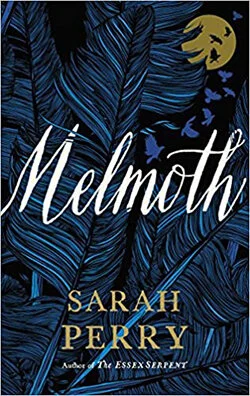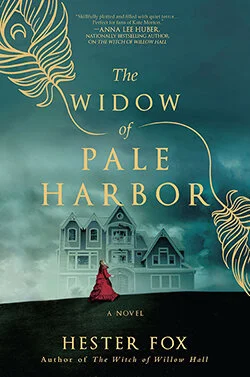THEMES OF ISOLATION
Whether it’s physical in nature or psychological, there are few literary devices that are more suited to a Gothic narrative than isolation. When you isolate your characters, they are forced to face the demons lurking in the shadows. Isolation is a close sister to setting as character, which I covered in my last post. Gothic horror and suspense fiction often feature isolated locations, beyond the reaches of the comfortable day-to-day lives our characters normally lead.
Isolation is sometimes implemented by writers during the “dark night of the soul” plot point toward the end of the story, before the climax. This is where I utilized the trope in Parting The Veil, where it helped me to set up Eliza’s declining emotional state. I isolated her to create more drama, but also to help her learn to depend on herself and face her monsters—both internal and external.
But themes of isolation needn’t only be used at the end of a story. They can be carried throughout.
One wonderful example of this is found in Mexican Gothic by Silvia Moreno-Garcia. When glamorous socialite Noemí Taboada receives a frantic letter from her cousin Catalina, she puts aside her glittering life in Mexico City and journeys to El Triunfo, a lonely, fog-shrouded mining town high in the mountains. When she arrives at High Place, her cousin’s looming house, Noemí finds it cold and unwelcoming, with secretive and eccentric residents. Catalina herself is catatonic—seemingly drained of her youthful essence.
“The house, so quiet, with its curtains drawn, was like a dress lined with lead. Everything was heavy, even the air, and a musty scent lingered along the hallways.”
Between the misogyny and racism exhibited by Catalina’s husband and his family, as well as the treacherous conditions in El Triunfo, Noemí’s isolation, fear, and frustration increase with each new day. Noemí suspects that her cousin’s strange thrall is tied to the house. Despite her best efforts to help Catalina, no one will listen to her urgent pleas to remove her cousin to healthier environs. Out of loyalty and love, Noemí fights against her instincts to run and stays with Catalina. In return, High Place wraps its tendrils of imprisonment around her until she’s forced to confront the rotting, monstrous secret within the house and fight for her survival.
This sort of isolation can also be manifested psychologically. In Sarah Perry’s Melmoth, the lead character, Helen Franklin, is a loner. Living in self-imposed exile in wintery Prague, her guilt and regret over the choices she made in her youth have left her insecure and jaded. The ghosts from her past haunt her to the point of destructive self-flagellation and denial of even the simplest of pleasures:
“Helen is doused in jasmine water. The pleasure it gives her is troubling, and she is recalled to her need for penitence. What is she doing, dressed in cashmere and tulle, smelling of gardens at dusk, while rich sweet food and music is promised within the hour? She is revolted by her transgression, by how willingly she submits to small pleasures, and in contrition scratches her wrist and raises a welt on her skin.”
Even though she has a small circle of friends, Helen never lets them get too close—too afraid they might know her for who she truly is. When she begins seeing a shadowy figure on the fringes of her vision, stalking her like prey, Helen’s isolation grows and she descends further into her recursive state of paranoia and self-loathing. Melmoth was my favorite book of 2019. It packs an emotional gut punch and the twists are so well-executed I never saw them coming. Helen herself is all too relatable: we often create our own misery because of our refusal to forgive ourselves.
Isolation can also serve as protection for a character. In The Widow of Pale Harbor, Hester Fox creates a lush Gothic romance in the grand tradition of the genre, featuring a young widow living as a recluse on the fringes of society and a grieving pastor who has chosen an austere life out of his own misplaced sense of guilt and regret.
Sophronia Carver, accused of her husband’s murder and rumored to be a witch, lives by the sea in a beautiful but intimidating mansion. Her only companion is her devoted housekeeper, who guards her from the maliciousness of the townspeople in the small seaside village. Locked within her gilded cage, Sophy is content in her homebound role as the editor of a successful literary magazine. She isn’t tempted to break free of her self-imposed isolation until minister Gabriel Stone comes to Maine, scarred by his own tragedy. For the first time in years, Sophronia Carver decides to go to church:
“She needed a moment to collect her strength, and then she would step through the gates for the first time in over three years. How the townspeople would gape as she passed by in her fine silk dress, inclining her head in gracious greeting to those who thought they had vanquished her to obscurity.”
When a rash of strange murders occurs, based on the tales of Edgar Allan Poe, Sophy is blamed, and Gabriel becomes her only ally. Fox masterfully ties Gabriel and Sophronia’s wounds together, culminating in a tender romance with plenty of thrillingly dark moments to keep the pages turning.
Isolation can be a useful and varied literary tool. It can give you a vehicle to enhance your work with deeper point-of-view and character interiority, or work as a useful pinch point within the plot. Isolation increases fear and suspense, as well as character empathy, because for many of us, being alone in the dark with our unmoored thoughts and feelings is the greatest—and most familiar—fear of all.
What are some of your favorite stories featuring motifs of isolation? I’d love to see your examples in the comments.
*All buy links for featured books are hyperlinked within article



